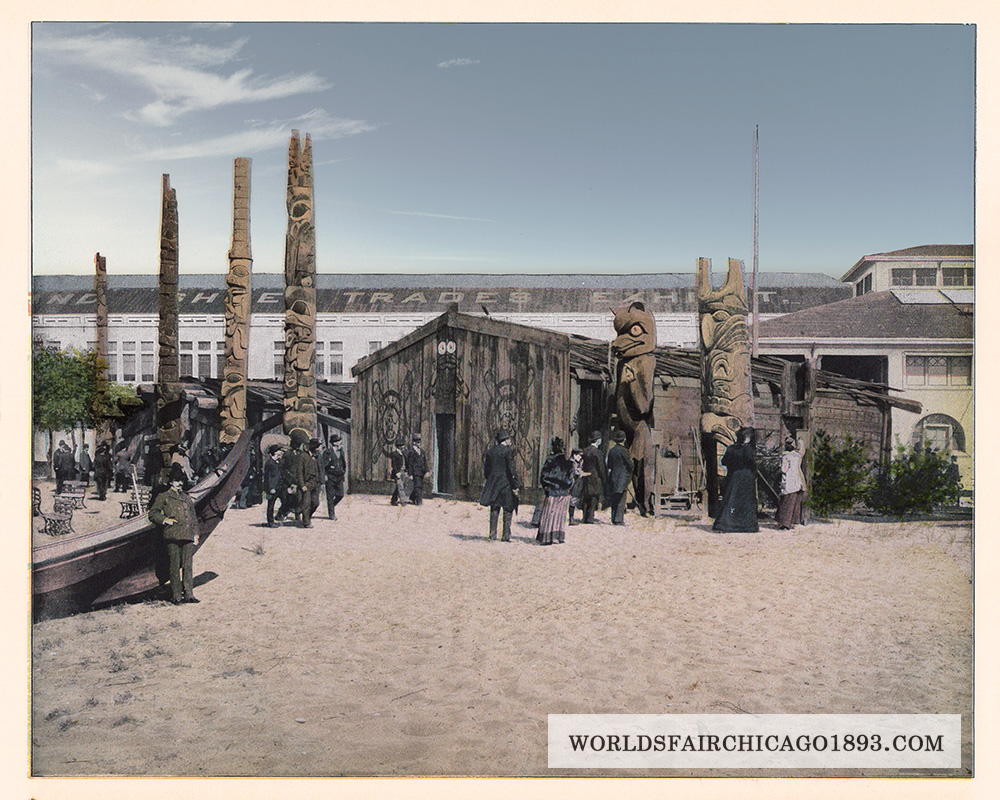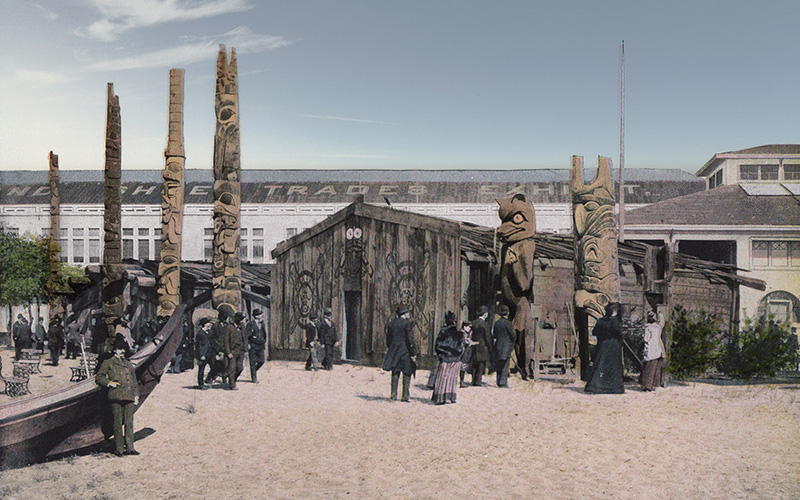Page 71 – THE ALASKAN INDIAN VILLAGE

 THE ALASKAN INDIAN VILLAGE.—Our vast territory of Alaska was not represented at the Fair to the extent its fast-developing resources might have justified. There were no territorial commissioners from that northwestern region, and such regular exhibits as were made appeared in the Government Building under the auspices of the Interior Department. Its fur display, loaned by a private Alaskan firm, was the richest ever made in this country, including the skins of the sea otter, silver fox, seal, mink and others of special value. If Alaska did not appear in the regular departments, though, the territory at least supplied a delegation of its inhabitants, whose mode of life was well illustrated and whose appearance and demeanor drew much attention. Near the South Pond, in which lay the old whaler, “Progress,” whom some of the natives might previously have seen on her voyages to the Arctic Ocean, was a village of Quackuhl Indians who, during the Fair, lived there as nearly as conditions would allow, just as they lived at home. Their rude, oddly decorated huts, their boats, and, most conspicuous of all, their totem poles, were conspicuous objects. The totem poles were trunks of trees quaintly carved and the characters upon them told in a sort of picture language of the deeds of deceased ancestors. A totem pole seems to be an indicator of the social standing of the family possessing it, and the longer the pole, the higher the grade in Quackuhl estimation. A rugged and by no means unintelligent people are these Indians of the northern Pacific coast.
THE ALASKAN INDIAN VILLAGE.—Our vast territory of Alaska was not represented at the Fair to the extent its fast-developing resources might have justified. There were no territorial commissioners from that northwestern region, and such regular exhibits as were made appeared in the Government Building under the auspices of the Interior Department. Its fur display, loaned by a private Alaskan firm, was the richest ever made in this country, including the skins of the sea otter, silver fox, seal, mink and others of special value. If Alaska did not appear in the regular departments, though, the territory at least supplied a delegation of its inhabitants, whose mode of life was well illustrated and whose appearance and demeanor drew much attention. Near the South Pond, in which lay the old whaler, “Progress,” whom some of the natives might previously have seen on her voyages to the Arctic Ocean, was a village of Quackuhl Indians who, during the Fair, lived there as nearly as conditions would allow, just as they lived at home. Their rude, oddly decorated huts, their boats, and, most conspicuous of all, their totem poles, were conspicuous objects. The totem poles were trunks of trees quaintly carved and the characters upon them told in a sort of picture language of the deeds of deceased ancestors. A totem pole seems to be an indicator of the social standing of the family possessing it, and the longer the pole, the higher the grade in Quackuhl estimation. A rugged and by no means unintelligent people are these Indians of the northern Pacific coast.


